Here is the Volume 8 of American Football from When you watch something, visit us first! Mr. Yorihisa SEKIGUCHI, former Head Coach of the “ThreeNailsCrowns “, the American Football team of J.F.Oberlin University told us about the Reaction by Offense (OF) of American Football. This is the combined version of Part 8-1 and 8-2 on our YouTube channel.
In the American Football Vol.7, we learned about the Setting up by Defense of American Football.
Mr. Yorihisa SEKIGUCHI, former Head Coach of “Three Nails Crowns,” the American Football team of J. F. Oberlin University, told us again about the Reaction of Offense.
.png)
Part 8-1: When the play breaks down
In this way, Defense (DF) tries to confuse Offense (OF) as much as possible, and what OF does in response is important, but I think what OF hates most is being pressured on their Quarterback (QB). Throwing the ball from this position is the basic of QB.
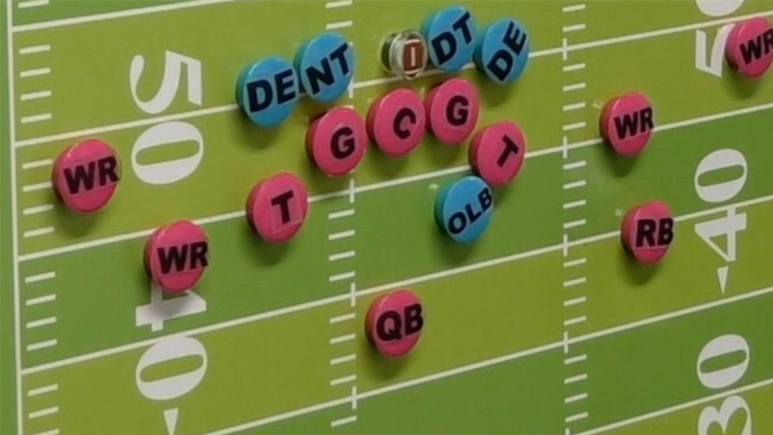
For example, suppose 5 DF players come in for Pass rush, and one of them comes without any cover. In that case, QB has to get out of the “Pocket” to avoid being sacked and throw a pass, or run with the ball himself.
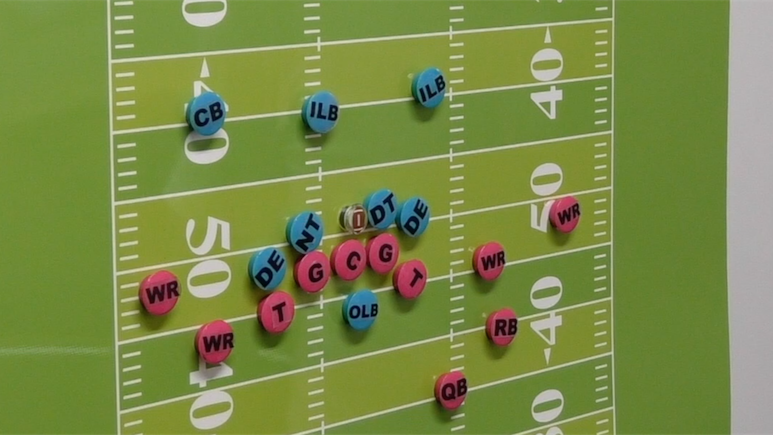
If QB is very athletic and fast, perhaps running with the ball himself is the most effective way and there is less risk of turnover, therefore, in such case, QB may often run himself, but many QB are not that good at running, so what most teams do is to have a specific way for Receivers to respond when QB goes out for Scramble. For example, Receiver in the Deep zone should come back, or another Receiver in Under zone should move to the opposite side.
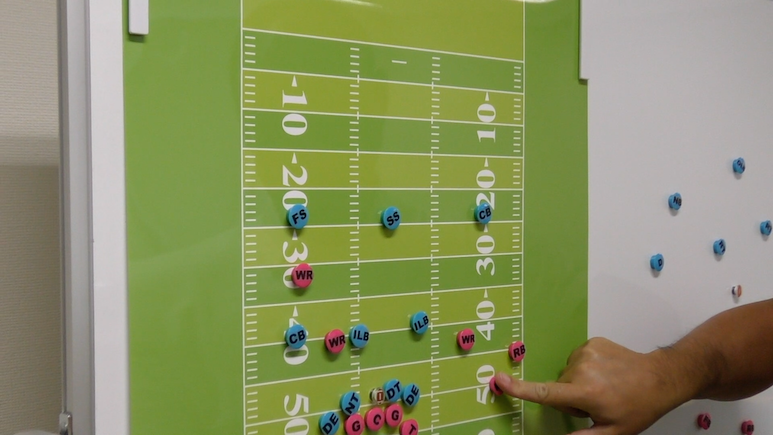
And, Receiver in the Deep zone on the opposite side of the Scramble should come into the QB’s field of vision as possible.
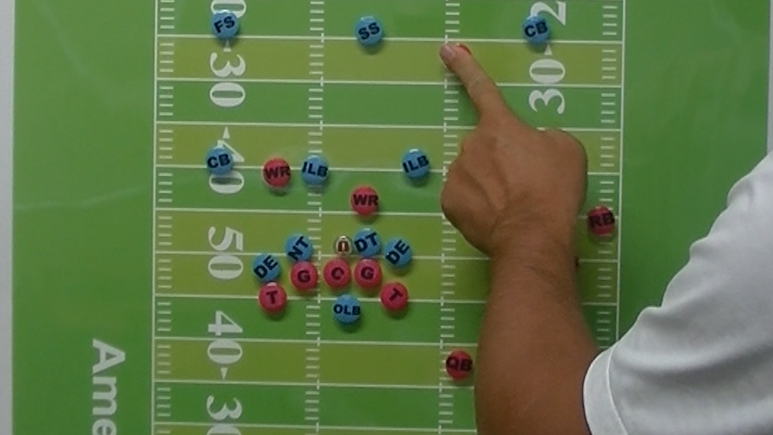
If QB is in his allocated position, Receiver supposes that the ball should come when he reaches here, but if it does not come, Receiver will look for QB. “What!?” “Oh, QB moves to there.” Then Receiver might think to go further to the Deep zone,” or to come back closer and help QB, and there are some rules that have already been decided within the team, and players just follow them duly.
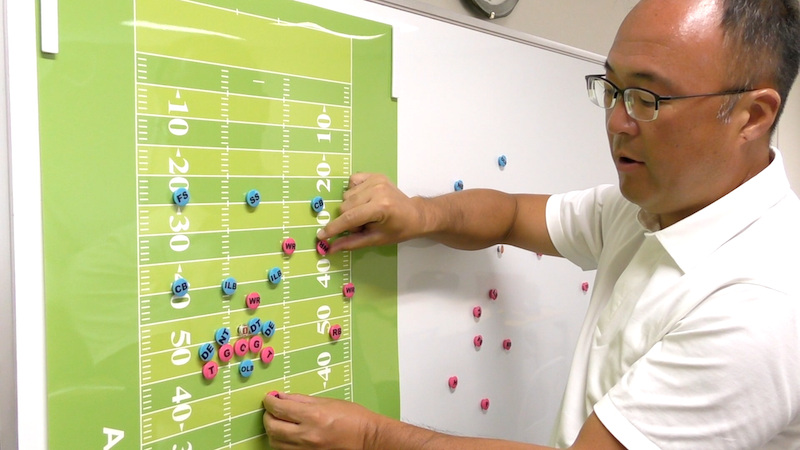
Like this way, I think many teams have some commitments to have QB release the ball as quickly as possible while QB goes to Scramble.
When DF competes in this way, for example, in a broken play like this, DF definitely does not want to be thrown a Pass. The reason is that it is very hard to defend here 1-on-1, so it is very important to put as much pressure as possible on QB to keep him from throwing the ball here.
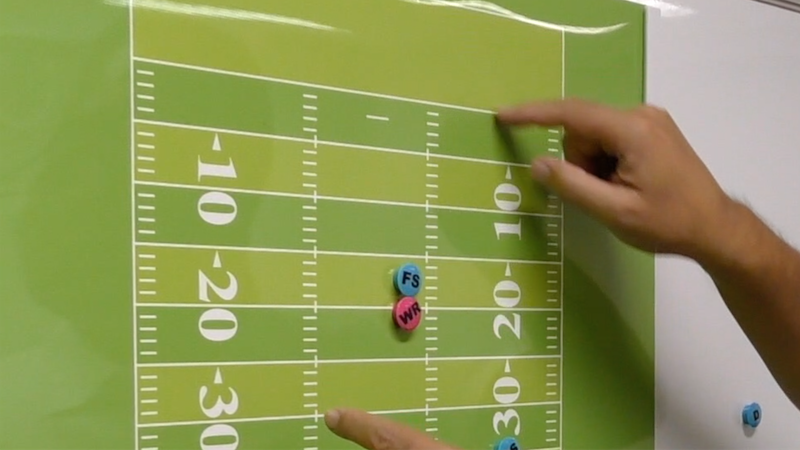
For this reason, it is often to decide within the team when to go tackle QB by the player who initially covered Pass. For example, if QB gets out of the Pocket, Linebacker (LB) on the same side will immediately go tackle him, and the rest of the players will make a commitment to cover Receivers anyway. I think many teams are dealing with the Scramble in the way that the backward players are to cover Receivers.
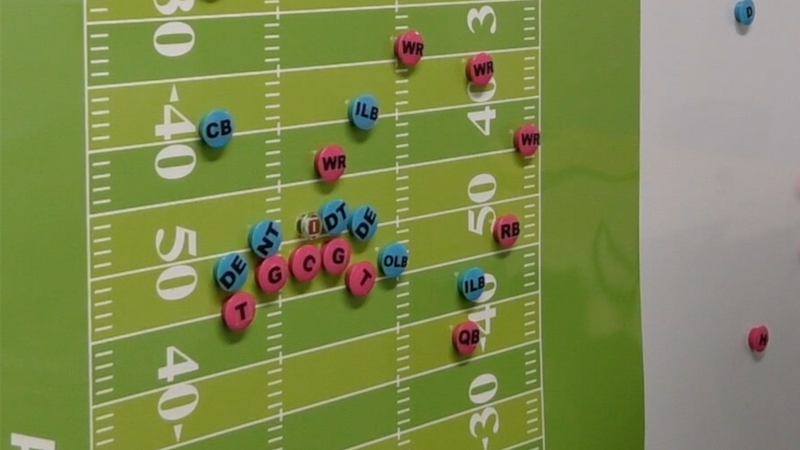
When the play breaks down, it makes it harder for DF to defend, which means that OF has a chance, so when DF makes a move, it makes American Football more interesting.
Part 8-2: Audible
Audible is relatively easy to understand. Offense (OF) anticipates how Defense (DF) will defend, for example, though OF thinks DF will come to Blitz powerfully and therefore the Deep zone will be defended man-to-man basis, DF may choose a normal Zone Defense. Or, OF expects DF not to blitz in this situation, but DF is in a formation in which DF will clearly come to Blitz.
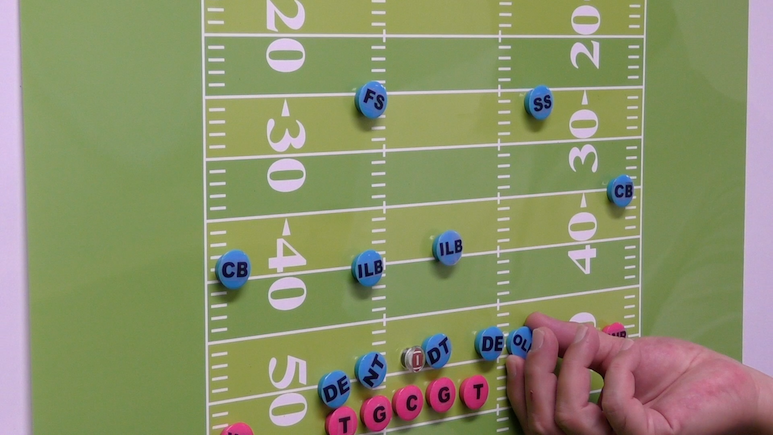
If the situation is somehow different from the expected by OF, or if, for example, OF has some agreement to choose a predetermined play if DF is in a certain formation, OF will duly do such play. So, it depends on the team what kind of rules they have in place, but when DF comes with a different formation than OF is expecting, OF thinks about what would be advantageous against this DF and OF may passively change their play.
For example, if OF has been using a lot of Run plays on the right side of the field, and DF is increasing the number of players on the Strong side, i.e. Field side, then OF will now choose the Run play on the other side.
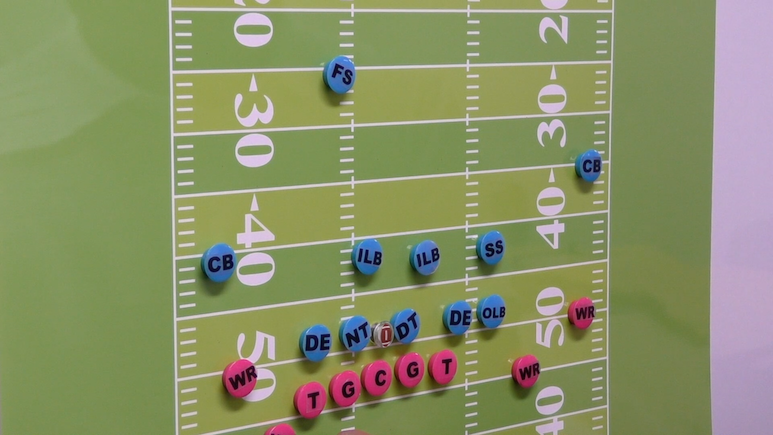
Simply it is the intention of OF to play in the advantageous side with fewer DF players. Or, if DF has DB players up front, then OF can let all Receivers go behind DB and try to make a Pass to the open Receiver. This depends on how team thinks, their ideas, and what they think the opponent hate to be done.
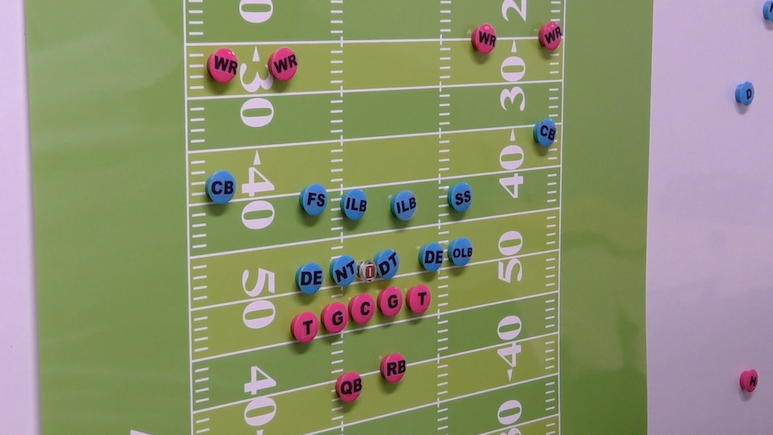
Q: What are some common change by Audible?
I think it is common to change the direction of the attack by Audible. Depending on how the DL players set, it is often for OF to reverse the direction of the attack. So a balanced formation by OF, like 5.5 players on one side and 5.5 on the other, is difficult to defend for DF. If DF gathers players on this side, when OF attacks on the opposite side, there will be fewer DF players there.
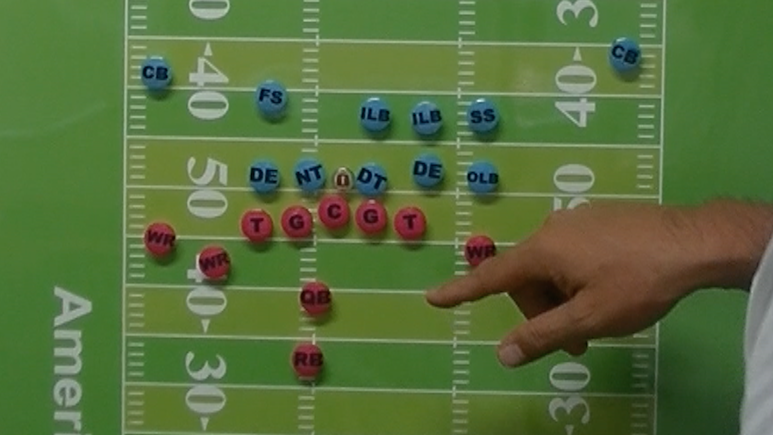
So, for example, there is a formation of this kind, but depending on how DF thinks as a team, they may decide that the side with more OF players is Strong side. And if there were an equal number of OF players on both sides, some teams would decide Field side, i.e. the wider side, is the strong side. So when OF is in position like this, the number of Gaps for Run play is more on the left. But in terms of number of players, the left and right are equal in number.
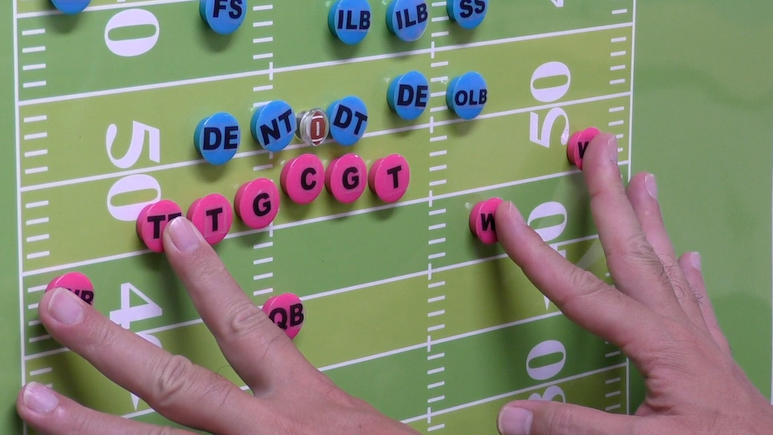
Then, if DF decides that Field side is the Strong side, if OF makes a Run play on the other side, DF will not have enough players to defend. Like this, if OF uses a balanced formation, DF will be uncomfortable.
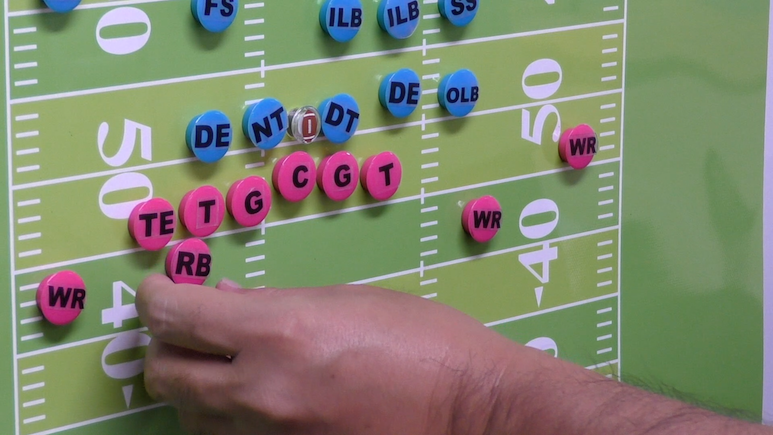
Q: When changing a play by Audible, is QB allowed to change the play as he wants?
No, it is decided in advance within the team. For example, if DF forms this formation in a Deep zone area in their own, OF will use this play to get out of it, or if DF adopts this formation in this situation, OF will use this play, and so on, and QB’s ability to choose which play is also a factor.
As OF is conservative, so it is better to decide in advance that these are all the options and have a common understanding among all OF players that this is all, so there are no mistakes when changing the play. For OF, the worst thing is a players mistakes the assignment when they change the play. This makes it easy for DF player coming in to Pass rush to reach QB. The last thing OF wants is to lose the Offensive opportunity because of that.
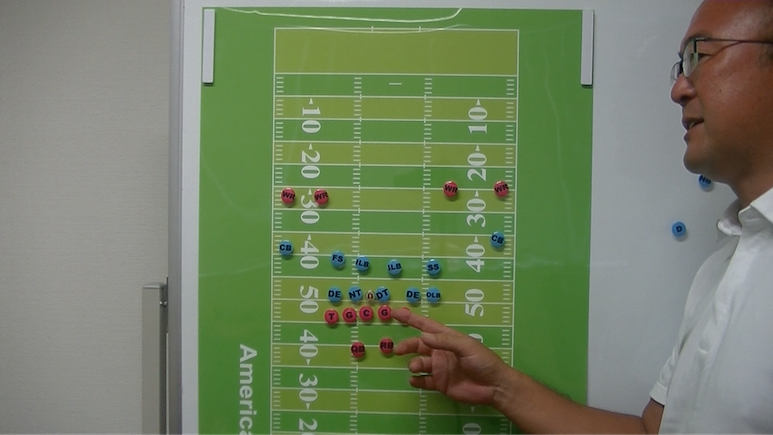
It is not bad to reduce the number of options in order to reduce such risks, but on the other hand, fewer options limit the number of plays that can be made, so players and coaches are playing the match while thinking about how to best deal with such points in terms of probability.
Share this content:
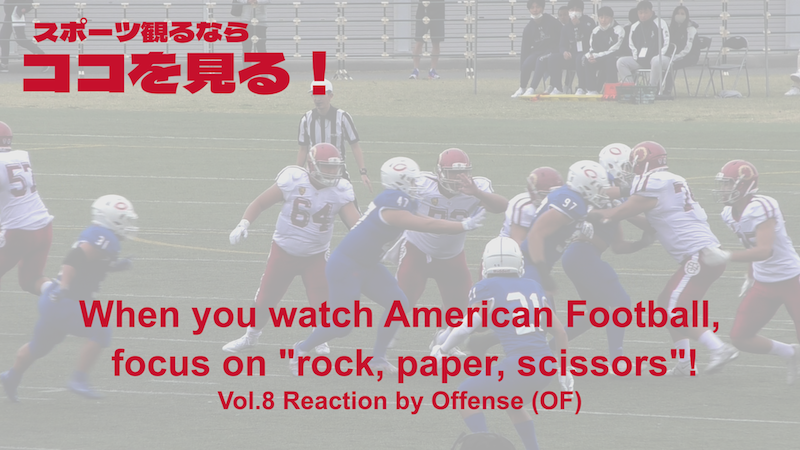
コメントを残す